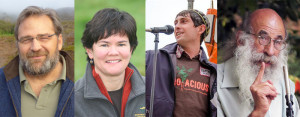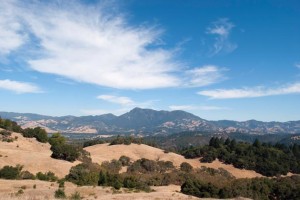If someone asked you to name the 26 states that offer certified “master naturalist” programs, there’s a good chance you’d class California among those. Until recently, you’d have been wrong.
But now the Golden State finally has such a program. “We saw how successful the program was in other states,” says Adina Merenlender of the University of California Cooperative Extension. “We studied the naturalist program in Texas and thought; how about California?” That’s right, Texas.
If nothing else, the two states do have large size in common. “California presented challenges because of its size — it’s the size of a country,” says Merenlender, who helped develop the program and says it’s still in its “launch phase.”
The California naturalist program provides training, in collaboration with local sponsoring institutions, for adult environmental stewards through an outdoor and in-class curriculum.
For six months, aspiring naturalists get hands-on instruction and exposure to real world environmental projects. Naturalist certification is provided once the course is completed, and many graduates volunteer with federal, state, and local agencies and nonprofits.
Merenlender and her colleagues at UC Extension spent the past five years developing different aspects of the program, what she describes as “laying the ground work.” Getting people on board, discussing the resources and availability of the courses. Eventually, UC formed a partnership with Santa Rosa Junior College and Pepperwood Preserve. Santa Rosa JC became the first institution to “pilot” the naturalist program and the early returns have been encouraging: “There has been no problems filling the classes, they are very popular,” says Merelender.
Dr. Shawn Brumbaugh, instructor for the naturalist program at Santa Rosa JC can attest to the programs popularity. “The program has been well received. The demand seems to be there – we could probably fill two courses,” he says. “Students are hungry for this material. The program’s getting good word of mouth, and we’ve been getting an interesting mix of young students and everything in-between.”
Brumbaugh says the class is especially fun to teach: “Students are there because they want to be there.” Each week students hear from different instructors, docents, and stewards who bring in their own “expertise and energy.”
As for helping the naturalist program expand, Brumbaugh says, “I’d love to help other institutions get started. I get as much teaching this course as the students.”
For now, the biggest challenge is finding other groups with facilities, like the junior college and Pepperwood, where students can enroll and do fieldwork.
“There are many groups and local institutions that don’t know about the program,” says Merenlender. “Botanical and nature groups, formal science and watershed groups could benefit from the training and take advantage of the materials.”
To become a sponsor, an organization must meet certain requirements, but once a sponsor is approved, UC Extension provides course training, program support, course tools, and an interactive web database to help track the program’s effectiveness.
In effort to gain more sponsors the UC is holding a special workshop on September 27, 2011 at the UC Botanical Gardens in Berkeley. The workshop will include training and discussion for those interested in the CA naturalist program.
While it’s too soon to measure the impact of the California naturalist program, Merenlender says she sees great potential: “I’m confident because it has worked in other states.”
Read more about the California naturalist program at ucanr.org/sites/UCCNP, or register for the September 27 workshop.

.jpg)



